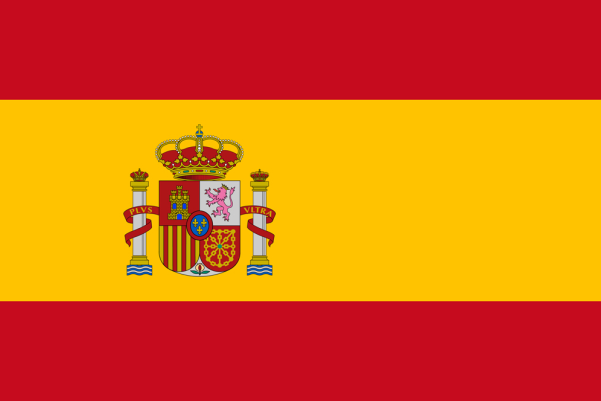Famous for its beaches and stunning natural landscapes, the Northeast is also Brazil’s most historic region and home to some of the country’s strongest cultural traditions
Located in the tropical zone, just below the equator, it is the third largest region of Brazil – to have an idea, the total area of the region is approximately six times that of the entire UK – and is split into the highest number of states for a Brazilian region, and includes Alagoas, Bahia, Ceará, Maranhão, Paraíba, Pernambuco, Piauí, Rio Grande do Norte and Sergipe – each of which is so special that individually justify the price of an air ticket to Brazil.
Given its countless cultural attractions, the Northeast is one of the Brazilian regions with the greatest potential for tourism, an industry that helps grow and stimulate the local economy. Altogether there are hundreds of tourist spots, with attractions that cater for all tastes.
It was in the Northeast that colonisation in Brazil began, with the arrival of the Portuguese in 1500, which subsequently led to the development of the main economic activities of the colonial period, with visible architectural features preserved to this very day, especially in the ancient cities of Salvador, São Luís and Olinda – World Heritage Sites. Other historic towns in the region include Marechal Deodoro and Penedo, in Alagoas; São Luís and Alcântara, in Maranhão; João Pessoa, Paraíba and Olinda, in Pernambuco.
For those who like the coast, the beaches of the Northeast are undoubtedly among the most beautiful in Brazil, if not the world. With a stretch of over than 3,000 kilometres of sand and an average of 300 days sunshine a year, there is no shortage of options, ranging from the busiest and liveliest to the more remote and quiet. Think about real natural pools with crystal clear green waters, palm trees, beach huts and seafood. What else could you want?
The most popular beaches include: Maragogi and Barra de São Miguel, in Alagoas; Porto Seguro, Trancoso, Morro de São Paulo, Boipeba, Maraú, Caravelas and Sauípe, in Bahia; Canoa Quebrada, Porto das Dunas, Iracema and Jericoacoara, in Ceará; Porto de Galinhas, Praia dos Carneiros and Fernando de Noronha, in Pernambuco; Pipa and Genipabu, Rio Grande do Norte.
For nature lovers and ecotourism there are some very privileged areas of natural beauty and biological diversity, as well as a growing infrastructure offered to tourists. The most recommended are: Chapada Diamantina, in Bahia; Cânions (Canyons) do Xingó, in Sergipe; Chapada do Araripe and Serra do Baturité, in Ceará; Delta do Rio Parnaíba, in Piauí; and Lençóis Maranhenses, in Maranhão. They offer breath-taking backdrops and scenery so don’t forget your camera!
Despite its coastal appeal, it would be wrong to think of the Northeast as just beaches and fresh water. Something less commonly known is the option of venturing out to archaeological sites and remains of prehistoric human existence, dating back over 50,000 years, that have been preserved at the Serra da Capivara National Park – a World Heritage Site – as well as at Serra das Confusões and in Sete Cidades, in rural Piauí. These are the sites of the oldest found ceramic art of the Americas, 10,000 year old paint, fossils of both humans and animals, cave paintings and other ancient artefacts. The discoveries are on show at Museu do Homem Americano in the city of São Raimundo Nonato, one of the most important sites for the historical study of the human species.
In a land of so many contrasts, the climatic diversity (being tropical on the coast and semi-arid inland) also reflects the region’s cuisine. Along the coast from Pernambuco down to Bahia, the influence of African cuisine is stronger thanks to the legacy left by the slaves who populated this area during the period of mass sugarcane production. In Alagoas, on account of the area’s coastal lagoons, the specialty is seafood. In Maranhão, a Portuguese influence is more dominant. In the hinterland, the climate favours the consumption of meat, especially sun-dried beef and dishes made with roots. In the more rural reaches, it is the dishes more readily associated with the June celebrations that tend to stand out. As June coincides with the harvesting of corn, most of the sweets, cakes and pastries enjoyed during the festivities are corn based: pamonha (corn paste wrapped in corn tusks), curau (corn mousse), milho cozido (corn on the cob), canjica (sweet corn pudding), couscous, popcorn and corn cake.
Although celebrated in all four corners of Brazil, in the Northeast the ceremonies honouring the three Catholic saints – St. John, St. Peter and St. Anthony – are the most respected. The Northeast’s celebrations are considered among the liveliest in the country. It is a month full of presentations, local craft exhibitions and delicious stalls offering typical, local foods.
Another strong and picturesque cultural tradition of the region is literatura de cordel (“string” literature) – a form of popular poetry printed and distributed in the form of illustrated leaflets produced by xylographs. The tradition, inherited from Portugal during the 18th Century, earned its name as its booklets were exhibited to public but tied to cords that were extended from small shops, popular markets or even in the streets. Even today, they are available at a low price at popular fairs, composed in rhyme and accompanied by the classic sound of a viola. It is a unique and fun tradition well worth checking out.
Land of many experiences, the Northeast also has a wealth of local celebrations and folklore. Bumba-Meu-Boi, in Piauí; the feast of Bom Jesus dos Navegantes, in Alagoas; São João, in Paraíba; the carnival of the cities of Olinda and Salvador – the largest in the world – and dozens of other festivals that provide true spectacles typified by exuberance, dancing and colour.
The dances and rhythms of the Northeast are a completely separate chapter, unique for their frenetic energy and almost acrobatic dance of frevo, with its imposing maracatu drums, the slower, more romantic pace of the xote, accordion and triangle, the indigenous line dancing of xaxado and the “two-to-there-two-to-here” footsteps of the azabumba of forró.
Interestingly, the origin of the latter has been attributed to the “Brazilianised” pronunciation of “dances for all“, events that were promoted in early 20th Century by British Great Western railroad engineers in an attempt to attract rail operators from Pernambuco, Paraíba and Alagoas. No doubt an interesting tale that unites the two countries and gives the British a special reason to visit the region.
As a result, as well as being the land of sun, joy, hospitality and natural beauty, the Northeast stands out thanks to its rich and palatable history, preserved in the traditions born from a peculiar mix of European, African and indigenous cultures, making it not only one of the most special tourist destinations in Brazil, but the world.
Feel like planning a trip and experiencing such diversity and beauty first hand? Get in touch with one of BBMag’s partner travel agencies (see our advertisers in this edition or visit the BBMag Directory at www.bbmag.co.uk)
















